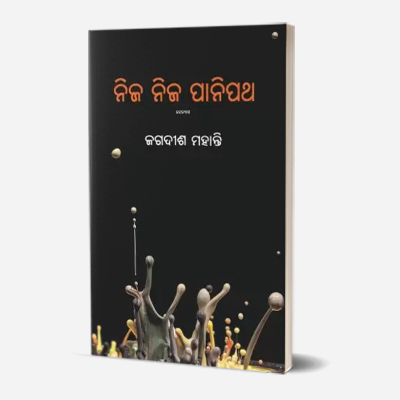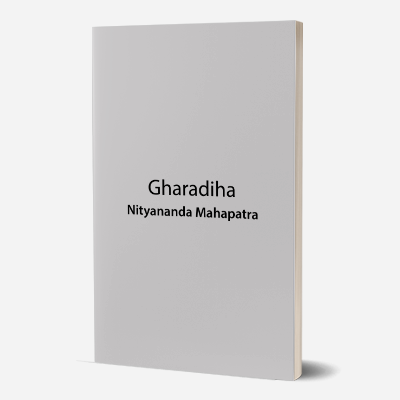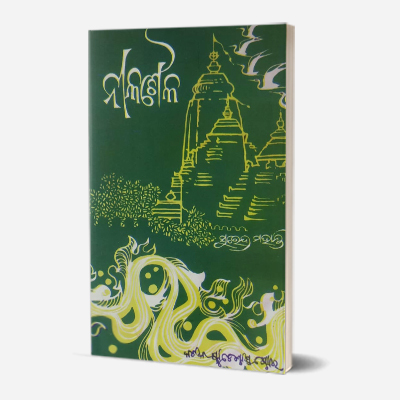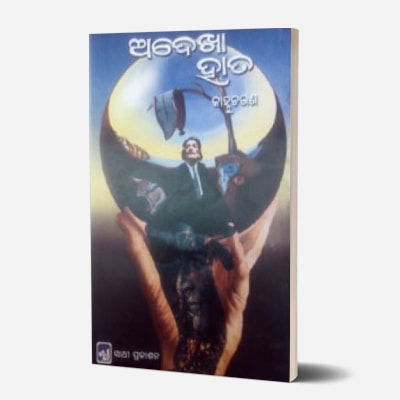Nija Nija Panipatha
By Jagadish Mohanty
The novel Nija Nija Panipatha deals with life and union-politics in the remote Tarbahar Colliery in the backwaters of a small western Odisha town. It focuses on the characters’ psyches and shows how the seeds of their sense of victimhood lie in their personal history of trauma and suffering. Deshmukh is a high-level officer in the colliery and Harishankar Patnaik is a down-at-heels working class leader. But they are alike in their feeling of vulnerability in the face of larger impersonal forces. With a true novelist’s gift Mohanty has individualized them, thus rendering them complex and immune to stereotyping. Pradyumna, a middle-class Brahmin boy, had to assume the identity of Samaru khadia, a tribal folk, while purchasing a job from the mafia. Coal India has a policy to offer employment to the people whose lands have been acquired. Many tribal people opted for instant money in lieu of such jobs. Local mafia targeted those individuals and resold the jobs. Pradyumna becomes a victim of the system as the plot gradually develops. There is no dearth of suspense and action in this fast-paced narrative, punctuated with face offs between the workers’ union and management, jealousies among officers, fiery speeches, fights between rival trade unions, based on opposing ideologies of Marx and Gandhi. Never before in Odia was a novel that delineated so realistically the gloomy, soot-blackened, and conflict-torn human environment that has come to be known as industrial. In Nija Nija Panipatha, Mohanty draws on social realism, psychoanalysis and existentialism to create a complete experience of the ‘industrial novel’ in Indian literature. The English translation of Nija Nija Panipatha will be released soon by Penguin Random House.
About the Author
Jagadish Mohanty (February 17, 1951 – December 29, 2013) is well known as the ‘trendsetter’ of modern Odia fiction. He has published 5 novels and 14 short story collections in Odia to his credit. His stories have been translated in English, Hindi, Bengali, Malayalam and Telugu. He edited two literary journals, Pallab from 1971 to 1974 and Sambartak from 1981 to 1983, which have given a revolutionary impact on the history of Odia literature. For the novel Kaniska Kaniska, he was awarded the Odisha Sahitya Academy award in 1989 and for the short story collection Suna Ilisi, he was awarded Sarala Puraskar in 2003.
Gharadiha
By Nityananda Mahapatra
Gharadiha deals with a period of about 20 years, from 1942 to 1961, that is beginning from the time of Quit India Movement to the Chinese aggression. The novel seeks to give an account of the changes during that period which disrupted the traditional pattern of village-life, as a result of which not only did the human character change but also the basic values of the village were sought to be redefined, leading to the threat of disintegration of village-life. The hero, a common villager who left the village twenty years ago in search of employment, returns to find everything changed – his land gone, his wife gone – himself a destitute and a victim of exploitation, and is forced to undergo almost an ordeal of fire. It received the Sahitya Akademi Award in 1987.
About the Author
Nityananda Mahapatra (1912 –2012) was an Indian Odia politician, poet and journalist. He was imprisoned three times by the British Raj between 1930 and 1942 for nationalist activities. He came to literary prominence as editor of the Odia magazine Dagara, and as a short story writer after independence. In his political career, Mahapatra served as a member of the Odisha Legislative Assembly from 1957 to 1971 and as State Minister of Supply and Cultural Affairs from 1967 to 1971.
Nila Saila
By Surendra Mohanty
Nila Saila (The Blue Mountain) is contextualized in a crucial period of Odisha’s history—the troubled era of the eighteenth century. The title has been taken from the opening line of an impassioned janana (prayer) by Salbeg, a sixteenth-century Muslim poet who, at the insistence of his Brahmin mother, touched Lord Jagannath and was miraculously cured of a disease. The events of the novel take place between the years 1727 and 1736 and recounts the tragic struggle of Rama Chandra Dev II, the king of Khurda, who is revered by the people of Odisha as the representative of Jagannath – the presiding deity of the Odia race – converts himself into Islam and marries the daughter of the Muslim ruler of Cuttack, Rizia Bibi alias Jaba. But when Taki Khan, the then-Naib Nazim of Cuttack and Rama Chandra Dev’s own brother-in-law, tries to invade Khurda and destroy the idol of Lord Jagannath, Rama Chandra Dev fights bravely to protect the idol which symbolizes Odia identity and sentiment. With suitable flashbacks, observations, symbolism and interspersed with the local dialect, Mohanty unravels the past. This novel, which is an embodiment of secularism, amity and brotherhood, gives a truthful account of contemporary Odisha, but it is more than history. It is an intense portrayal of the religious and cultural tradition of Odisha which is still an integral part of Odia racial consciousness. It received the Sahitya Akademi Award in 1969.
About the Author
Surendra Mohanty (21 June 1922- 21 December 1990) was a Sahitya Akademi Award-winning Odia author. He has written short stories, novels, travelogues, criticism and biographies. He wrote around 50 books belonging to different genres. Apart from being a litterateur, he was also a politician and a member of parliament in 1957.




